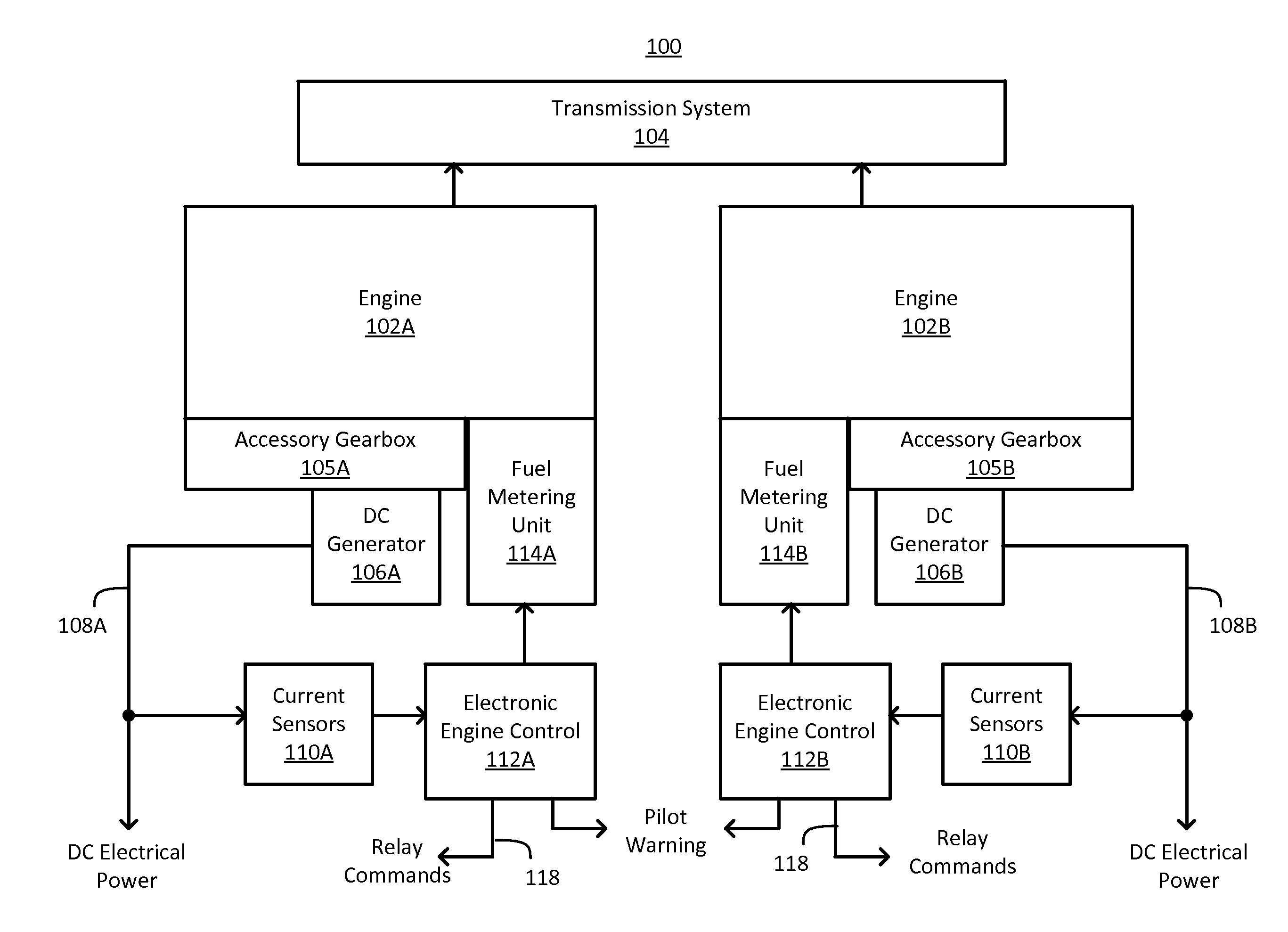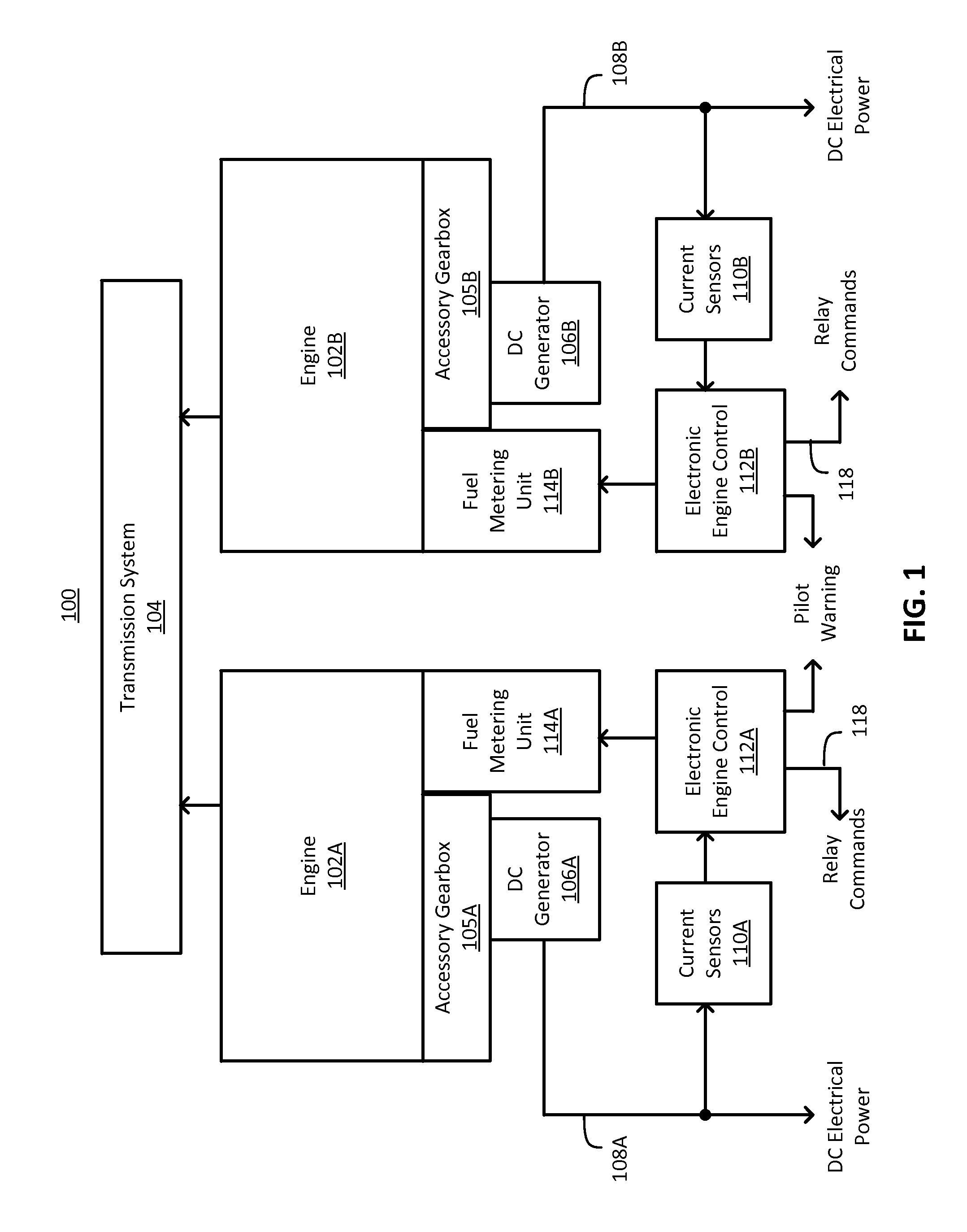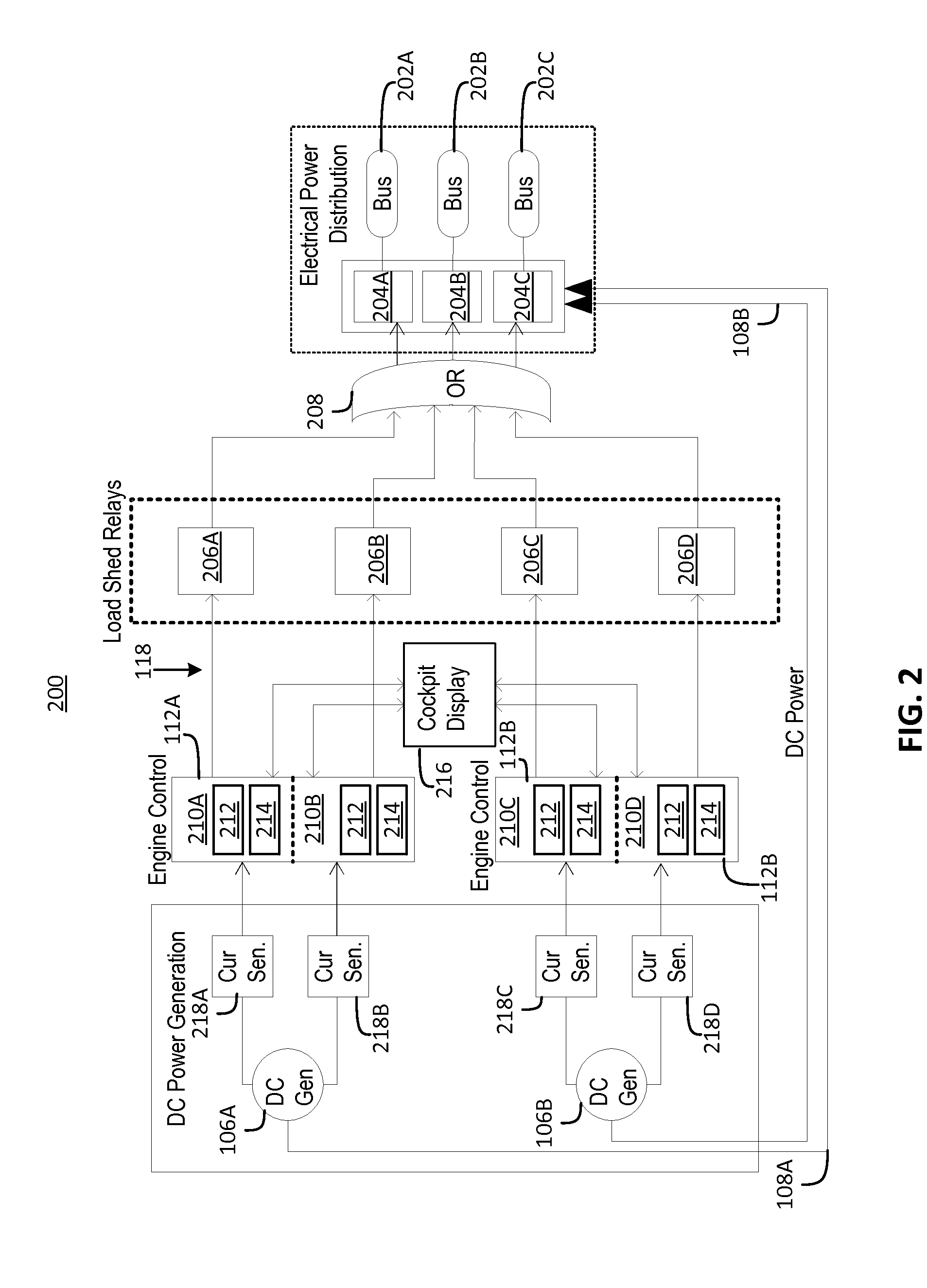Engine electrical load shed control
- Summary
- Abstract
- Description
- Claims
- Application Information
AI Technical Summary
Benefits of technology
Problems solved by technology
Method used
Image
Examples
Embodiment Construction
[0020]In embodiments, an engine control system for an aircraft, such as a rotorcraft, monitors loads on each engine and sheds electrical loads under predetermined conditions. The engine control system is configured to automatically manage non-essential electrical loads based on aircraft operating conditions. A full authority digital engine control (FADEC), i.e., an electronic engine control, can be utilized to directly monitor DC electrical loads and to directly command a shedding / reduction of non-essential DC electrical loads when engine operating conditions demand. Generator load (amperage) is measured by aircraft current sensors as an analog signal which is used as an input to the FADEC for each engine. Each FADEC typically includes at least two separate processing systems, referred to as “channels”. Dedicated sensors, one-each per FADEC channel, provide for crosscheck fault detection and redundancy. FADEC hardwired outputs are employed to directly and redundantly activate aircra...
PUM
 Login to View More
Login to View More Abstract
Description
Claims
Application Information
 Login to View More
Login to View More - R&D Engineer
- R&D Manager
- IP Professional
- Industry Leading Data Capabilities
- Powerful AI technology
- Patent DNA Extraction
Browse by: Latest US Patents, China's latest patents, Technical Efficacy Thesaurus, Application Domain, Technology Topic, Popular Technical Reports.
© 2024 PatSnap. All rights reserved.Legal|Privacy policy|Modern Slavery Act Transparency Statement|Sitemap|About US| Contact US: help@patsnap.com










